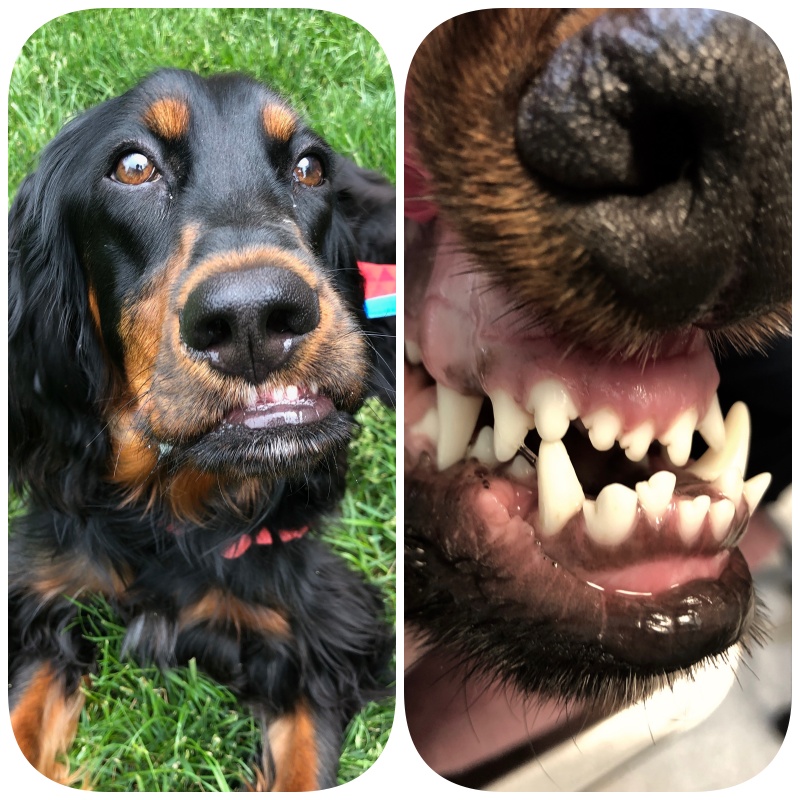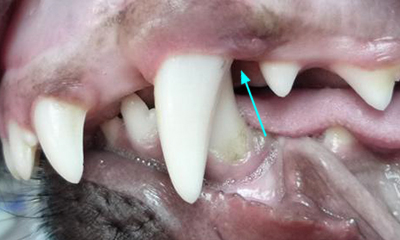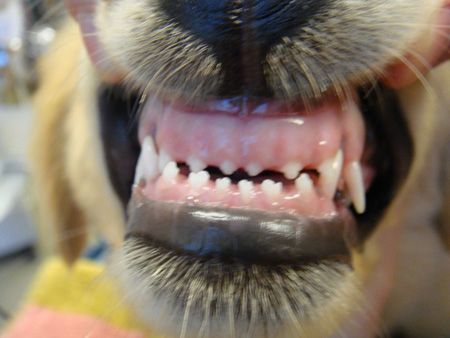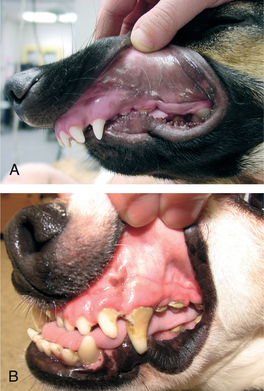class iii malocclusion dog
Hale DVM FAVD Dipl AVDC Page 3 June 2018 Long Distance. Malocclusion in dogs is usually hereditary which means the condition is passed down to future generations.

Defining Dental Malocclusions In Dogs Is The First Step Toward Treatment
A new treatment classification system of Class III malocclusions utilizing three dentoalveolar and three skeletal components combined with cephalometric.

. The mandible resides mesial rostral to its normal location in relation to the maxilla Photo 6. In rostral crossbite cases similar to anterior crossbite in people one or more of the mandibular incisor teeth are labial to the opposing maxillary incisor teeth when the. The estimated incidence of Class III malocclusion among the Korean Japanese and Chinese is 4 to 14 because of the large percentage.
Class III malocclusion presents some complexity in terms of diagnosis and treatment and affects not only the jaws but the whole craniofacial complex. After eleven months of. Although considered normal in brachycephalic breeds maxillary incisor contact with the lingual floor or canine teeth can cause significant trauma and discomfort.
Class III canine relationship. Although considered normal in brachycephalic breeds maxillary incisor contact with the lingual floor or canine teeth. A class III malocclusion can be of dental or skeletal origin so it is crucial to classify the malocclusion accurately in order to manage it on a sound clinical basis.
A class III intermaxillary relationship means that the lower teeth are shifted forward with regard to the upper teeth. Mandibular mesioclusion Class 3 malocclusion. The center of the lower first molar mesiobuccal groove is anterior to the first.
Besides functional forward displacement of the mandible may be diagnosed in a patient presenting Class III malocclusion as. A malocclusion in which a mandibular tooth or teeth have a more buccal or labial position than the antagonist maxillary tooth. The mandibles are longer in respect to their normal relationship to the maxilla.
Class III malocclusion represents a growth-related dentofacial deformity with mandibular prognathism in relation to the maxilla andor cranial base. Materials and methods The experimental group comprised 18 patients with Class III malocclusion treated without extractions with a mean age of 118 years SD 28 at pretreatment 157 years SD 1. Class III malocclusions are considered underbites in dogs and cats.
Its prevalence varies greatly among and within different races ethnic groups and geographic regions studied. There are 6 persistent deciduous teeth. An underbite occurs when the mandibular lower jaw teeth protrude forward relative to the maxillary upper jaw teeth.
Mandibular mesioclusion Class 3 malocclusion. Malocclusions are common in certain breeds of dogs. The mandible resides mesial rostral to its normal location in relation to the maxilla Photo 6.
Sadly this serious craniofacial abnormality is considered breed standard for a great many breeds of dog and several breeds of cats the brachycephalics. Because of the severely deviated position of the impacted canine treatment included extraction of the maxillary right canine and left first premolar for midline correction followed by leveling alignment correction of compensatory tooth positioning and orthognathic surgery to correct the skeletal Class III malocclusion because of the severe. The relative mesio-distal relations of the jaws and dental arches are abnormal where the mandibular teeth occlude the maxillary teeth mesial to.
Angles molar classification is the original method of assessing a Class II malocclusion and still acts as a cornerstone of dental malocclusion. Class 3 malocclusion illustration relating to dogs including description information related content and more. Extraction of the offending was resolved the traumatic occlusion.
Mandibular mesioclusion or Class 3 Malocclusion MAL3. This often results in mandibular canine teeth traumatizing the palate. This Scottish Terrier dog had a severe Class III malocclusion resulting in canine trauma from the maxillary intermediate incisors and lingual floor trauma from the maxillary central incisors.
Known as a canine overbite the upper canine tooth is sitting in front of the lower canine tooth and is pointed forward. This is referred. It occurs when the lower jaw is too long relative to the upper jaw and the lower teeth protrude in front of corresponding upper teeth.
Class III malocclusion is a less frequently observed clinical problem than Class II or Class I malocclusion occurring in less than 5 of the US. The maxilla is too short relative to the mandibles. These dogs and cats.
This is a type III malocclusion in a dog- the lower jaw is longer than the upper jaw by about 12 an inch. Skeletal Class III Malocclusion with Canine Transposition and Facial Asymmetry IJOI 40 root torque springs ART were placed on both the lower anterior teeth and right maxillary canine for early torque control Figs. The American Veterinary Dental College defines Class II malocclusion as mandibular distocclusion when there is an abnormal rostro-caudal relationship between the dental arches in which the mandibular arch occludes caudal to its normal position relative to the maxillary arch Figure 3Terms that have commonly been associated with class II.
If the jaw length discrepancy is minimal then the upper and lower. Also known as an underbite undershot reverse scissor bite and mandibular prognathism. Advanced Continuing Education Courses Online for Veterinarians and Vet Technicians.
For example class 3 malocclusions underbites are commonly seen. Class II malocclusion. Class III Malocclusion.
Compensatory Class III malocclusion treatment associated with mandibular canine extractions Dental Press J Orthod. Population56 The prevalence is greater in Asian populations. Class III malocclusion has a multifactorial etiology which is the expression of a.
If a dog or cat has a class II or III malocclusion where the one jaw is shorter than the other jaw most often this is due to a hereditary genetic trait. Left and right canine relationships may be asymmetric due to dental or skeletal displacement. Malocclusion - rotation of right upper canine 104 RELATED ARTICLES.
The canine relationships are indicative of the incisor relationships. The current case report describes a compensatory alternative for Class III malocclusion treatment by means of mandibular canine extractions. It can be classified as rostral or caudal.
The embrasure between the lower canine and the lower first premolar is shifted forward with regard to the upper canine blue arrows. Canine width by about 3.

Patient 3 Had A Class Iii Malocclusion With An Impacted Maxillary Right Download Scientific Diagram

Malocclusions Misaligned Teeth Animal Dental Specialist

Treatment Of Class Ii Malocclusion With Tooth Movement Through The Maxillary Sinus American Journal Of Orthodontics And Dentofacial Orthopedics

That Bites Dental Malocclusions And Abnormal Bites In Pets Vet In Aurora The Animal Dental Clinic

Overbite Veterinary Dental Center Malocclusion In Pet

Canine Classification A Class I Canine With The Maxillary Canine Download Scientific Diagram
Helping Your Puppy With Teeth Misalignment Malocclusions

Canine S Classification Download Scientific Diagram

Malocclusions In Dogs And Cats Centennial Animal Hospital

Orthodontics In Animals Offices In San Mateo County

Malocclusion In Dogs And Cats The Veterinary Nurse

Identifying Problems Early In A Puppy Or Kitten Mouth

Severe Class Iii Malocclusion In A Dog Underbite

Severe Class Iii Malocclusion In A Dog Underbite

Case Reports Class Iii Malocclusion Dr Jamilian

Read This Dentistry Article By Katie Rankin Bs Rvt

Feature Oral Health Issues In The Dog Developmental Abnormalities Malocclusions By David E Hansen Dvm Favd Davdc

